OpenID Connect application registration
FoxIDs OpenID Connect application registration enable you to connect an OpenID Connect based application.
Your application become a Relying Party (RP) and FoxIDs acts as an OpenID Provider (OP).
FoxIDs support OpenID Connect Discovery where your application can discover the OpenID Provider.
FoxIDs support OpenID Connect authentication (login), RP-initiated logout and front-channel logout. A session is established when the user authenticates and the session id is included in the ID token. The session is invalidated on logout.
FoxIDs can show a logout confirmation dialog depending on configuration and rather an ID token is included in the logout request or not.
Default both ID token and access token are issued with the client's client id as the audience. The default resource can be removed from the access token in FoxIDs Control.
Access tokens can be issued with a list of audiences and thereby be issued to multiple APIs defined in FoxIDs as OAuth 2.0 resources.
The application can then call an API securing the call with the access token using the The OAuth 2.0 Authorization Framework: Bearer Token Usage.
FoxIDs support both client secret and Proof Key for Code Exchange (PKCE), and default require PKCE. If a client is configured with both PKCE and secret/key they will both be validated. PKCE and client secret/key is not validated in implicit flow.
The default client authentication method is client secret post and can be changed to client secret basic or private key JWT. Client authentication method none is supported with PKCE.
There can be configured a maximum of 10 secrets and 4 keys per client.
FoxIDs support the OpenID Connect UserInfo endpoint.
How to guides:
- Connect two FoxIDs environments in the same or different tenants with OpenID Connect
- Connect two FoxIDs environments in the same tenant with a Environment Link
It is recommended to use OpenID Connect Authorization Code flow with PKCE, because it is considered a secure flow.
Require multi-factor authentication (MFA)
The OpenID Connect client can require multi-factor authentication by specifying the urn:foxids:mfa value in the AcrValues parameter.
The AcrValues parameter can be set in the OnRedirectToIdentityProvider event in Startup.cs:
options.Events.OnRedirectToIdentityProvider = (context) =>
{
// To require MFA
context.ProtocolMessage.AcrValues = "urn:foxids:mfa";
return Task.FromResult(string.Empty);
};
See more code in the AspNetCoreOidcAuthorizationCodeSample and Startup.cs line 141.
Configuration
How to configure your application as a OpenID Connect application registration Relaying Party (RP) / client.
The clients FoxIDs discovery document is
https://foxids.com/tenant-x/environment-y/application-client1/.well-known/openid-configuration
if the client is configured in tenanttenant-xand environmentenvironment-ywith the application registration client nameapplication-client1.
A application registration client can possibly support login through multiple authentication methods by adding the authentication method name to the URL.
An authentication method name e.g.logincan possible be added to the discovery URL like thishttps://foxids.com/tenant-x/environment-y/application-client1(login)/.well-known/openid-configuration
During RP-initiated logout the authentication method name can be omitted in the URL if the ID Token is provided in the request.
Configure Authorization Code Flow for a confidential client
A confidential client could be a web application where the security is handled by the webserver which also stores the client secret.
- Specify client name in application registration name.
- Select allowed authentication methods.
- Specify redirect URIs.
- Specify post logout redirect URI.
- Select
codeas response type or possible but not recommendedcode tokenorcode token id_token. - It is not required to use PKCE in a confidential client but recommended to mitigate replay attacks.
- Specify a secret.
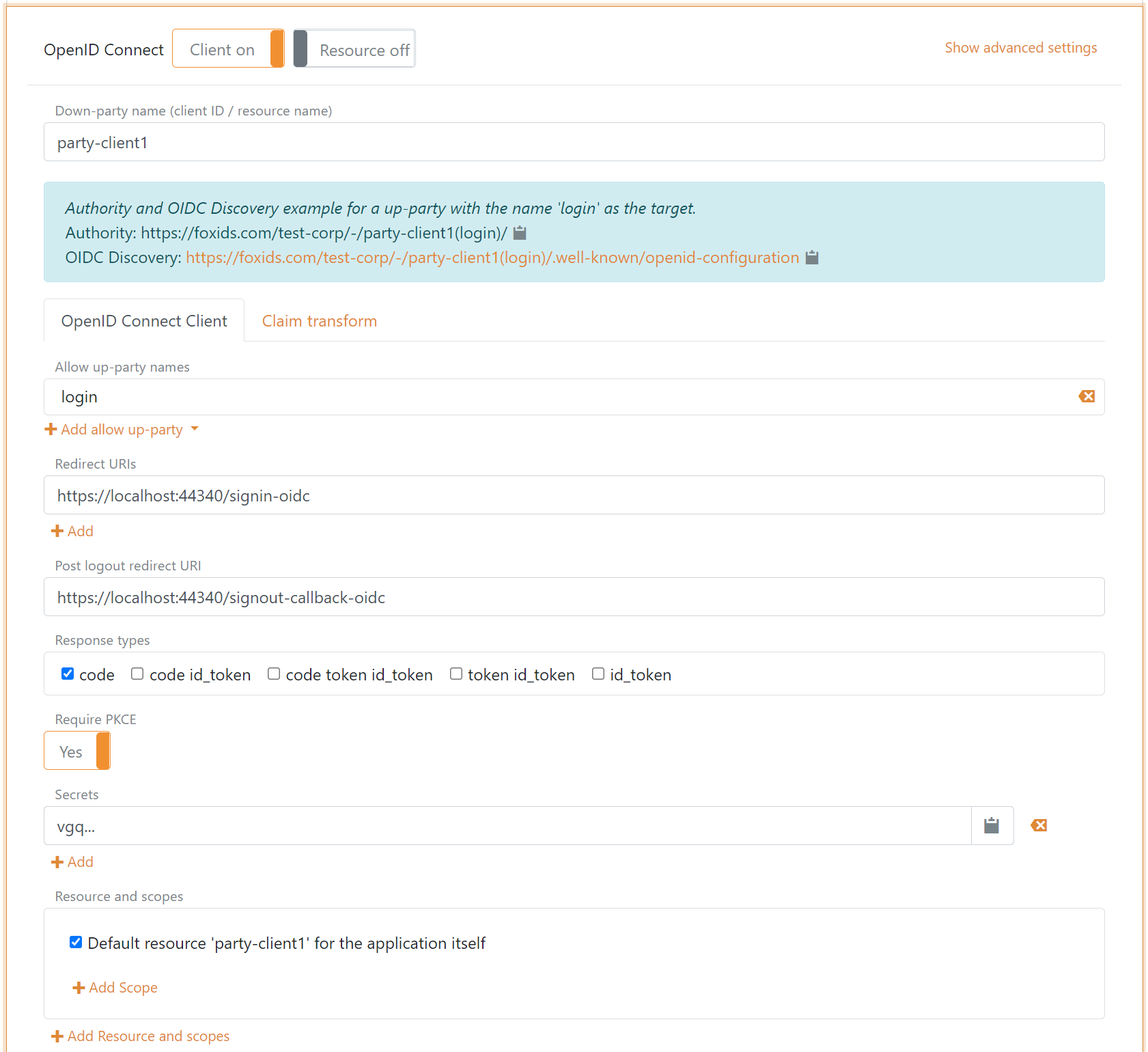
Configure Authorization Code Flow for a public client
A public client could be a browser-based riches client, Blazor client or mobile app. The application should use PKCE and not a client secret.
- Specify client name in application registration name.
- Select allowed authentication methods.
- Specify redirect URIs.
- Specify post logout redirect URI.
- Select
codeas response type. - Use PKCE, default enabled.
Click "Show advanced" to configure allowed CORS origins.
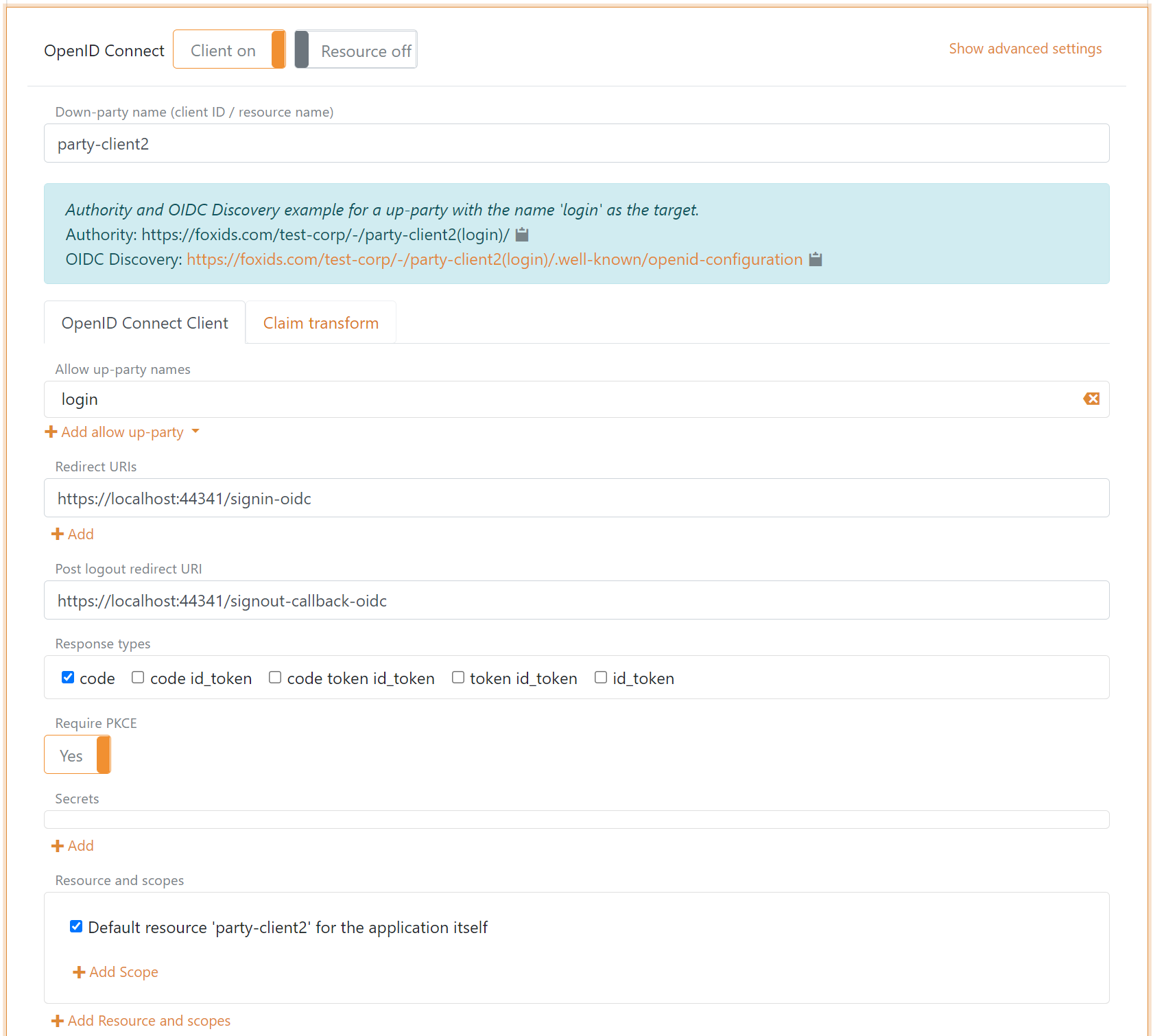
Configure Implicit Code Flow for a public client
A public client could be a web application where the security is handled by the webserver or a browser-based riches client. The application neither use PKCE or client secret.
It is not recommended to use Implicit Code Flow because it is insecure.
- Specify client name in application registration name.
- Select allowed authentication methods.
- Specify redirect URIs.
- Specify post logout redirect URI.
- Select
token id_tokenas response type or possible onlytoken. - Disable PKCE.
- Do not specify a secret.
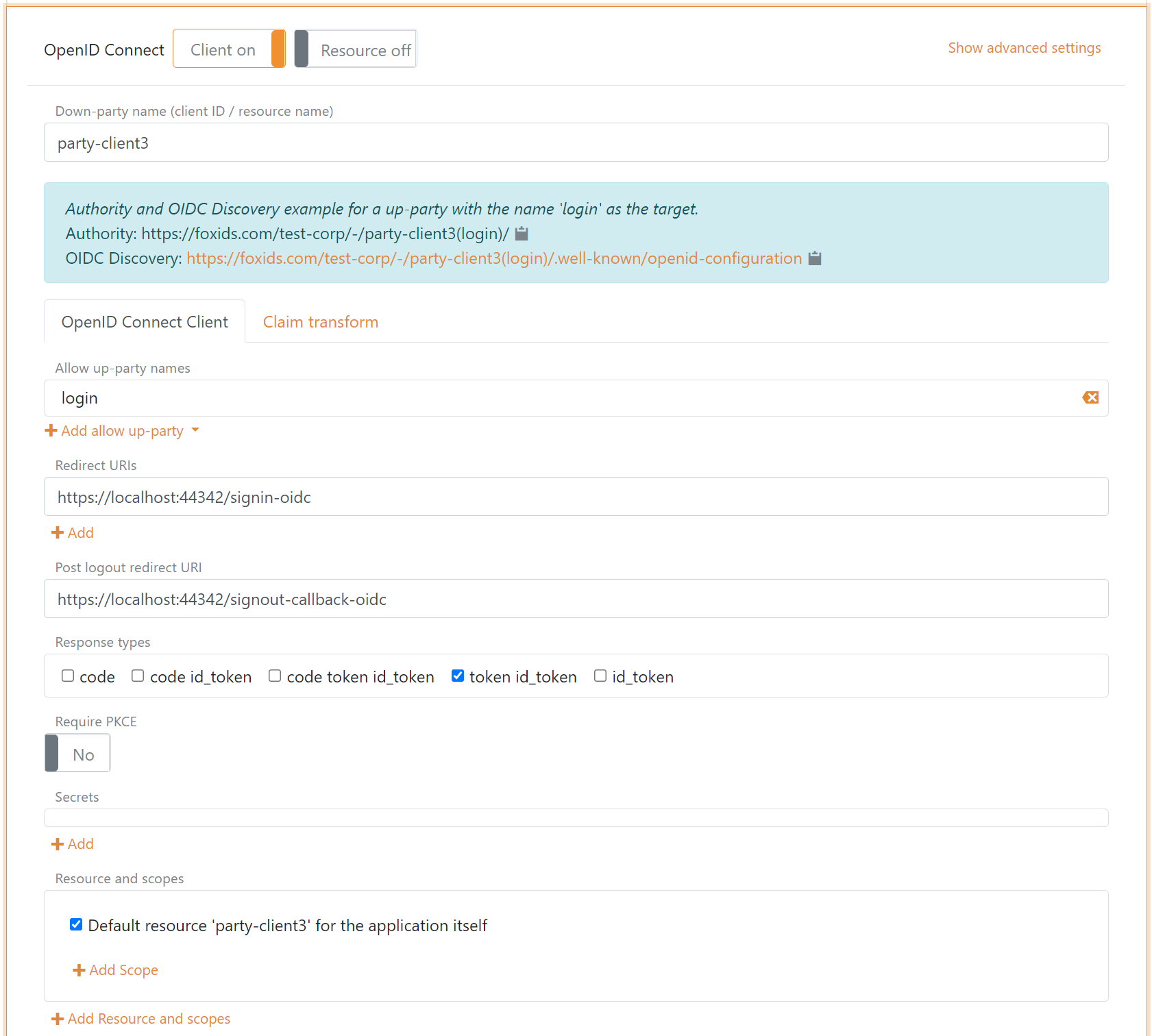
Client and API
It is possible to configure both client and API (OAuth 2.0 resource) in the same OpenID Connect application registration configuration, where both the client and API is defined with the same name. Furthermore, it is possible to configure resource scopes for the API.
Client tap
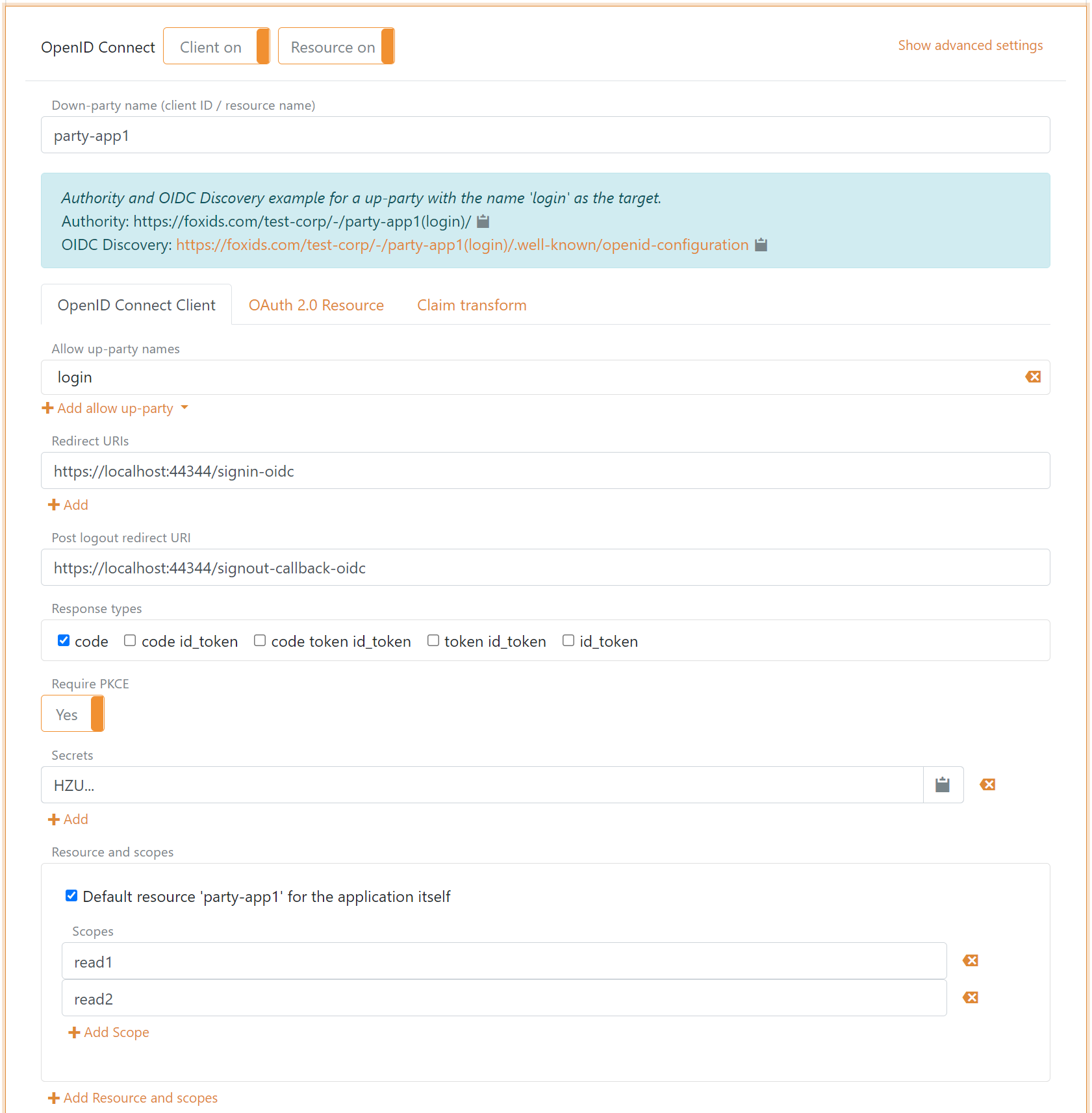
Resource tab
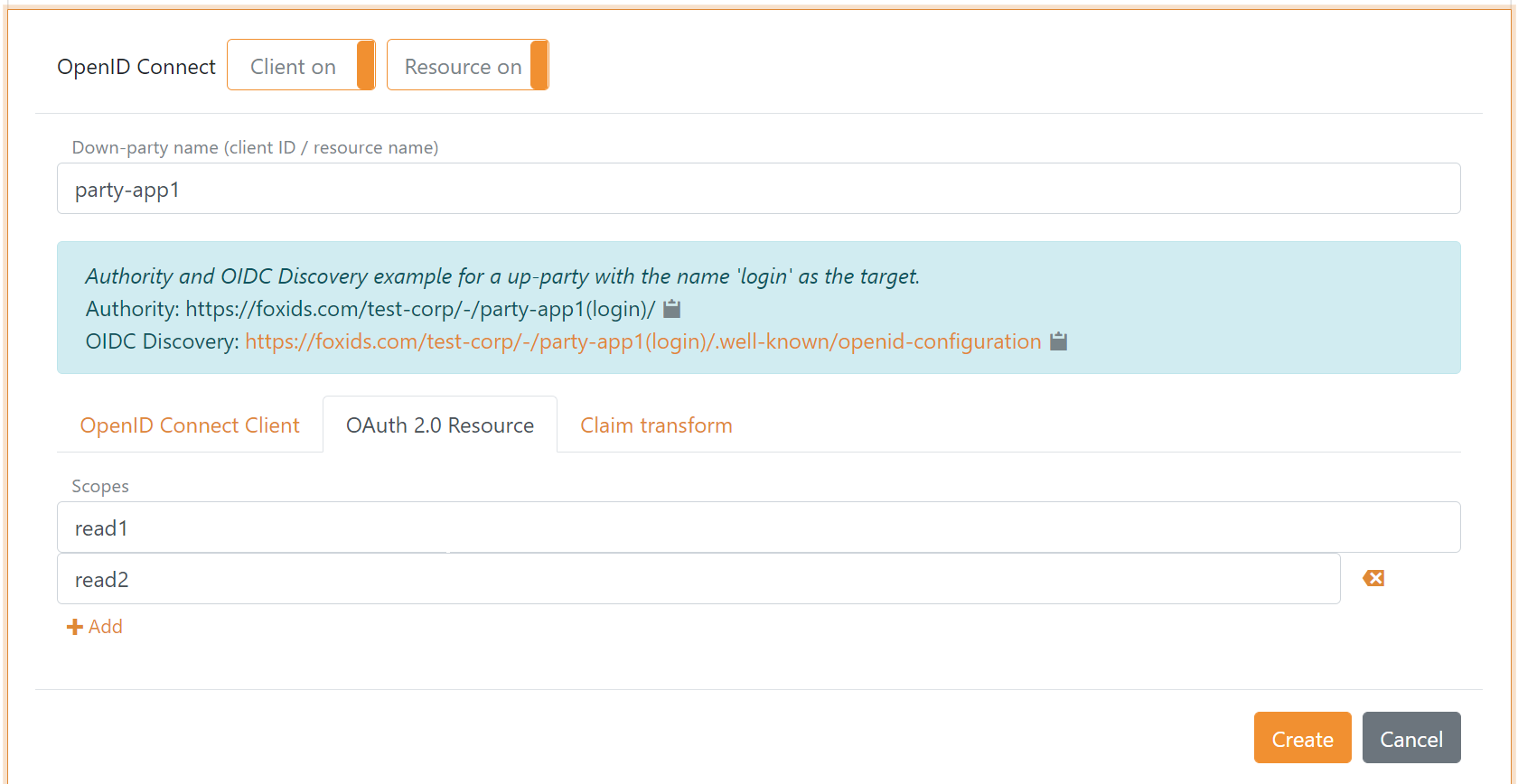
Resource and Scopes
An API is defined as a resource under which it is possible to define scopes. Such scopes are defined as the resource name dot scope e.g. application-api1.read1 or application-api1.read2.
In the client configuration tab, the scopes are defined underneath the resource name field.

In the resource configuration tab, the scopes are defined as a list of scope values.

Scopes configured in the client is validated if the scopes exist on the API. If the client and API is configured in the same application registration configuration, scopes added to the client is automatically added to the resource.
Scopes
The scopes can be configured in the client configuration tab. It is possible to define new scopes and a sets of claims which should be issued for the scopes in the Voluntary claims list.
You can change the claims and do claim tasks with claim transforms and claim tasks.
If you are creating a new claim, add the claim or * to the Issue claims list or alternatively add the claim to the Voluntary claims list and request the scope from your application.
A set of default scopes is added to the client configuration, which subsequently can be changed or deleted.
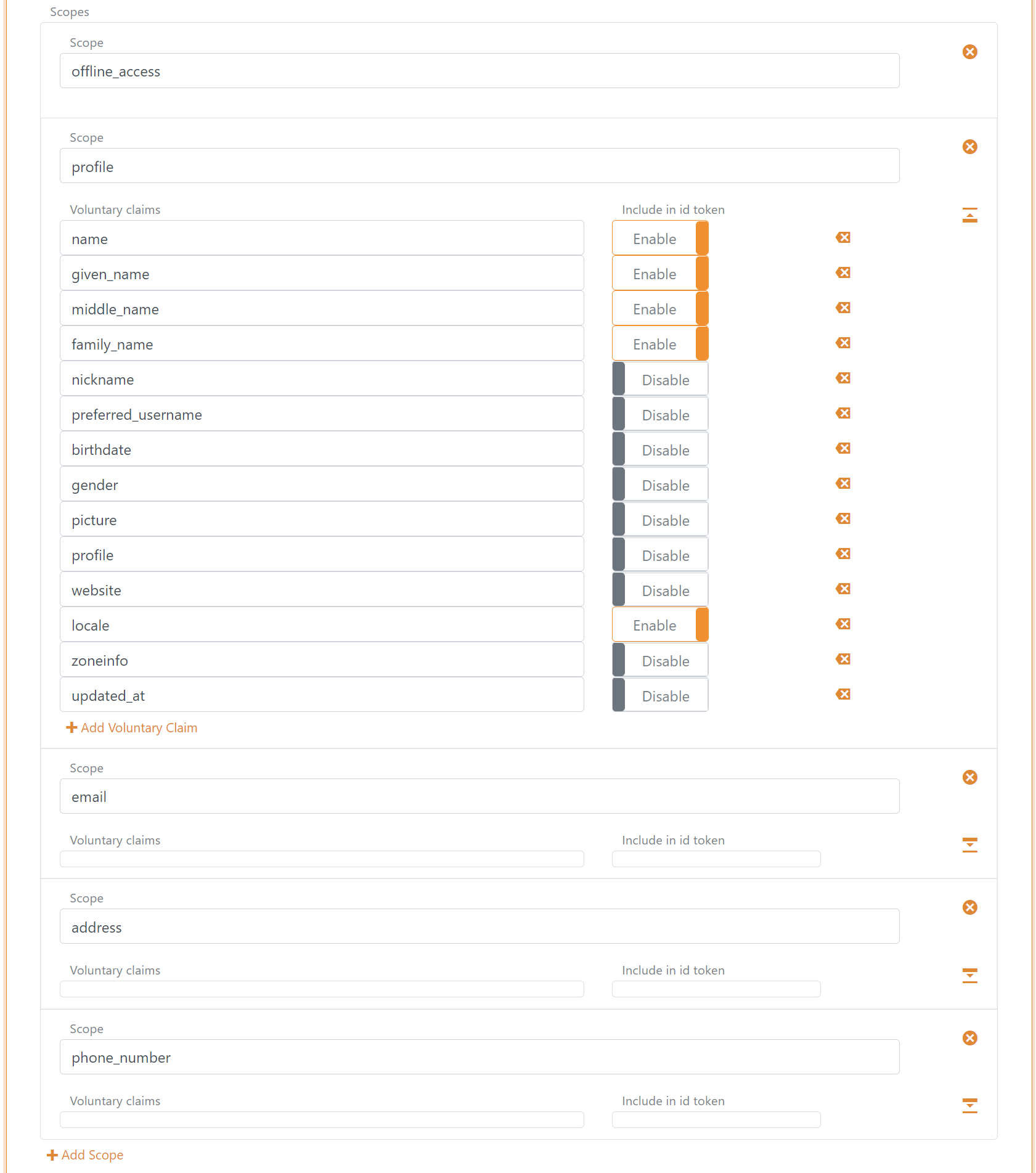
Token lifetime
The token lifetime is configured for the ID token, access token and refresh token.

In this example each refresh token is valid for 36,000 seconds. The application can continue to refresh the session with refresh tokens until the absolute lifetime of 86,400 seconds is reached.
